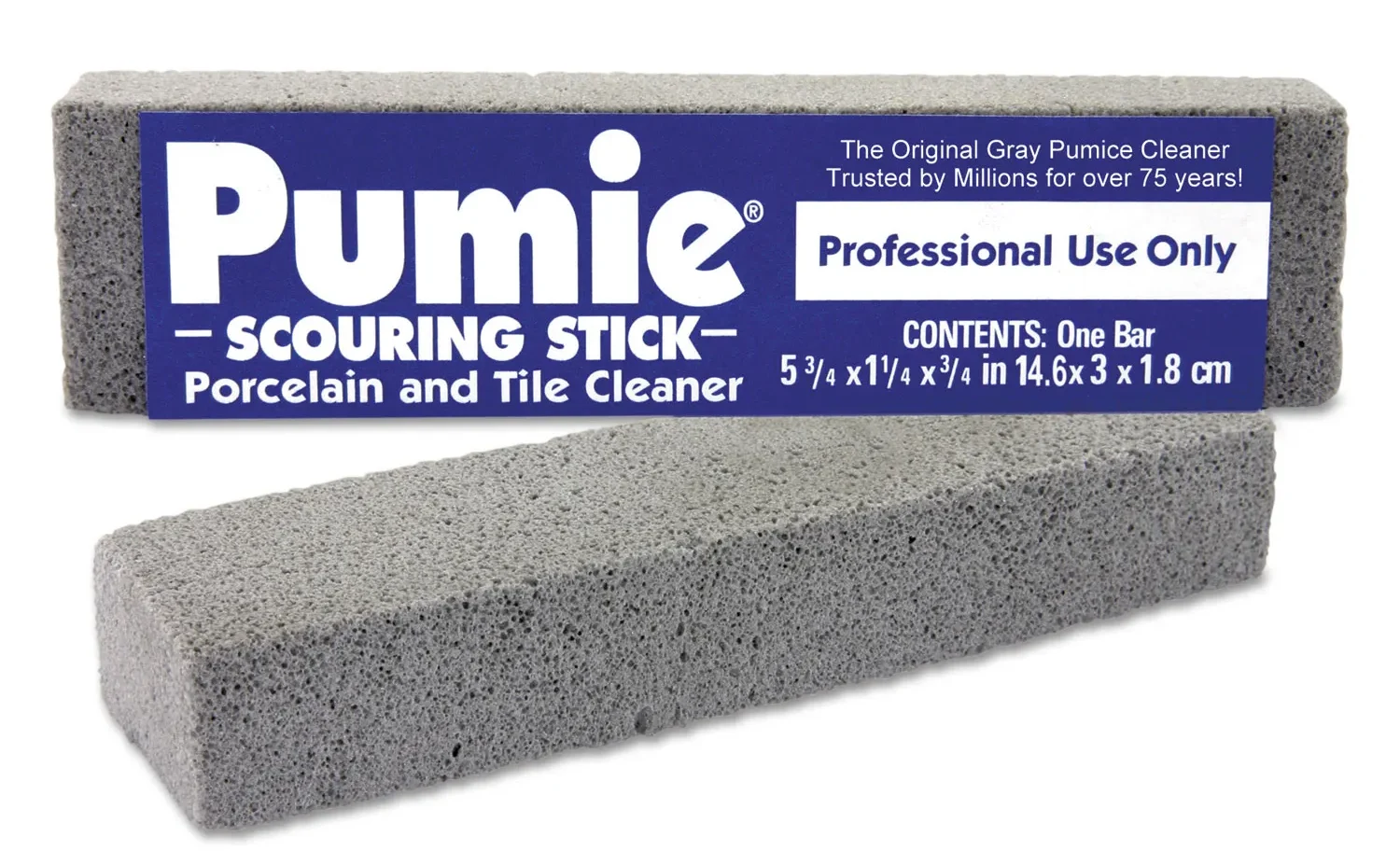The Ultimate Guide to Scouring Sticks: Why Every Home Needs One
Are you tired of scrubbing away at tough stains and grime, only to see minimal results? It’s time to introduce your home to the ultimate cleaning weapon: the scouring stick. This unsung hero of household cleaning is a must-have for every homeowner seeking a powerful and efficient way to tackle stubborn dirt and grime. In this comprehensive guide, we will dive into what exactly a scouring stick is, explore its numerous benefits, provide tips on how to choose the right one for your needs, and share some creative ways to use it in different areas of your home. Get ready to revolutionize your cleaning routine with this versatile tool that can make even the toughest messes disappear!
What is a scouring stick?
What is a scouring stick, you ask? Well, let me enlighten you! A scouring stick is a versatile cleaning tool that can tackle tough stains and grime with ease. It’s essentially a solid block made of abrasive material, such as pumice or melamine foam.
These sticks are designed to be used on various surfaces like ceramic, porcelain, stainless steel, and more. They work by gently scrubbing away dirt and residue without causing any damage.
One of the great benefits of using a scouring stick is its ability to remove stubborn stains that other cleaning tools may struggle with. Whether it’s soap scum in your bathroom or burnt-on grease in your kitchen, these little wonders can make quick work of even the toughest messes.
Not only are they effective at removing stubborn stains, but they also save you time and effort. With just a few swipes of a scouring stick, you’ll see impressive results without having to spend hours scrubbing away.
Plus, scouring sticks are incredibly easy to use. Simply wet the stick and apply gentle pressure while scrubbing the desired area. Rinse off any residue afterward for sparkling clean results.
So whether you’re dealing with mineral deposits in your toilet bowl or baked-on grime on your stovetop, a scouring stick should definitely be in every home’s cleaning arsenal! Stay tuned as we delve deeper into how to choose the right one for your needs next!
Benefits of using a scouring stick
When it comes to keeping your home clean and tidy, having the right tools on hand can make all the difference. One such tool that should be a staple in every household is a scouring stick. But what exactly are the benefits of using a scouring stick? Let’s dive in!
First and foremost, one of the biggest advantages of using a scouring stick is its versatility. This handy cleaning tool can be used on various surfaces, from hard-to-clean bathroom tiles to stubborn stains on pots and pans in the kitchen. No matter where you need some extra scrubbing power, a scouring stick has got you covered.
Another benefit is efficiency. With its rough texture and abrasive properties, a scouring stick effectively removes grime, grease, and dirt with minimal effort. Say goodbye to endless scrubbing sessions – just grab your trusty scouring stick and watch those tough stains disappear.
Not only does using a scouring stick save you time and energy but also money! Rather than relying on expensive cleaning products or disposable sponges that quickly wear out, investing in a durable scouring stick will prove cost-effective in the long run.
Moreover, using a scouring stick promotes hygiene by eliminating bacteria buildup. The rough surface helps remove food particles or soap scum that may harbor harmful germs or mold growth over time.
Let’s not forget about sustainability! Many modern-day society strives for eco-friendly alternatives when it comes to everyday tasks like cleaning. By opting for reusable scrubbers like scouring sticks instead of single-use items like paper towels or chemical-laden wipes, we can contribute towards reducing waste and creating an environmentally friendly home.
All these benefits combined make it clear why every home needs at least one trusty scouring stick as part of their cleaning arsenal. So go ahead – give it a try today and experience firsthand how this small yet mighty tool can transform your cleaning routine!
How to choose the right scouring stick for your needs
When it comes to choosing the right scouring stick for your needs, there are a few key factors to consider. You’ll want to think about the surface or material that you’ll be cleaning. Different scouring sticks are designed specifically for different surfaces, such as ceramic, stainless steel, or glass.
Next, take into account the level of abrasiveness that you require. Scouring sticks come in varying degrees of roughness, from fine grit to heavy duty. It’s important to match the level of abrasiveness with the severity of stains or grime you need to tackle.
Consider the size and shape of the scouring stick as well. Some may prefer a smaller stick for precision cleaning in tight corners or crevices, while others may opt for a larger size for more coverage on larger areas.
Additionally, look at any special features or added benefits that different brands offer. For example, some scouring sticks have built-in handles or ergonomic designs for easier grip and control during use.
Lastly but importantly – check customer reviews and ratings before making a purchase decision. This can give you an idea of how effective and durable a particular scouring stick is likely to be.
By considering these factors and doing a little research beforehand, you can choose a scouring stick that is perfectly suited to your specific cleaning needs!
Different ways to use a scouring stick in the bathroom
1. Cleaning grout: The scouring stick works wonders on dirty or discolored grout lines. Simply wet the stick and rub it along the grout, applying gentle pressure. Watch as the dirt and grime are lifted away, revealing clean and bright grout.
2. Removing stubborn stains: From soap scum to hard water stains, a scouring stick can tackle even the toughest bathroom stains. Wet the stick and gently scrub away at the stained area until it disappears. It’s like magic!
3. Reviving porcelain fixtures: Over time, porcelain sinks, toilets, and bathtubs can become dull or stained. However, with a scouring stick in hand, you can bring back their shine! Wet the stick and gently scrub any stained areas for a fresh look.
4.Scrubbing tiles: Whether your bathroom has ceramic or natural stone tiles, a scouring stick is perfect for cleaning them up! Its abrasive texture helps remove dirt from tile surfaces without causing damage.
5.Cleaning shower doors: Soap scum build-up is common on glass shower doors but fear not – a scouring stick will come to your rescue! Wet it thoroughly before gently scrubbing away those stubborn marks for sparklingly clean shower doors.
6.Tackling faucet buildup: Faucets often accumulate mineral deposits over time that can be challenging to remove. With a dampened scouring stick in hand though,, you’ll be able to effortlessly scrub away these unsightly deposits.
Different ways to use a scouring stick in the kitchen
1. Removing tough stains: One of the most common uses for a scouring stick in the kitchen is to tackle those stubborn stains that regular scrubbing just won’t budge. Whether it’s burnt-on food on your pots and pans or grime on your stovetop, a scouring stick can be your secret weapon.
2. Cleaning oven racks: Oven racks can quickly accumulate grease and grime, making them difficult to clean. A scouring stick can make this task much easier by effectively scrubbing away built-up residue without causing damage.
3. Restoring shine to stainless steel appliances: Over time, stainless steel appliances can become dull and lose their luster. Using a scouring stick gently on these surfaces can help remove scratches and restore their original shine.
4. Getting rid of soap scum in the sink: Soap scum build-up in sinks is not only unsightly but also unhygienic. By using a scouring stick with some water and mild detergent, you can easily remove this build-up and keep your sink sparkling clean.
5. Reviving cutting boards: Cutting boards often develop deep grooves over time, which can harbor bacteria if not properly cleaned. Using a scouring stick to scrub away any food particles stuck in these grooves will ensure your cutting board remains sanitary.
6.Cleaning hard-to-reach corners: The crevices between tiles or tight spaces around fixtures are notorious for accumulating dirt and grime that regular cleaning tools struggle to reach. With its abrasive texture, a scouring stick is perfect for getting into these narrow areas and giving them a thorough cleaning.
By utilizing different techniques with a versatile tool like the scouring stick, you’ll be able to conquer even the toughest kitchen cleaning tasks!
Additional uses for a scouring stick around the house
1. Outdoor cleaning: Scouring sticks are not limited to indoor use. They can be incredibly handy when it comes to outdoor cleaning tasks as well. Use them to remove stubborn stains from patio furniture, scrub away grime on garden tools, or tackle dirty spots on outdoor surfaces like brick walls or concrete driveways.
2. Car detailing: Has your car’s exterior lost its shine? A scouring stick can come to the rescue! Gently rub the stick over areas with tough stains or scratches, such as bumper scuffs or bird droppings. Be careful not to apply too much pressure, as you don’t want to damage your vehicle’s paintwork.
3. Shoe care: Don’t let dirty shoes ruin your outfit! A scouring stick can help restore the cleanliness of your favorite kicks. Simply dampen the surface of the shoe and gently scrub away dirt and stains using the scouring stick. It works wonders on rubber soles and can make white sneakers look brand new again!
4. Tile grout revival: Over time, tile grout tends to accumulate dirt and become discolored. Rather than spending hours scrubbing with a toothbrush, try using a scouring stick instead! Its abrasive texture makes light work of removing grime from in-between tiles, leaving them looking fresh and clean.
5.Craft projects: Get creative with a scouring stick! If you enjoy DIY crafts, these versatile tools can be used for various artistic endeavors. For example, they’re great for distressing wooden surfaces or creating unique textures on art pieces made from clay or other materials.
Remember that different types of scouring sticks may have varying levels of abrasiveness – some are gentler while others are more heavy-duty – so choose one that suits your specific needs for each task around the house.
Tips for using a scouring stick effectively
Using a scouring stick is a great way to tackle tough stains and grime around your home. Here are some tips to help you use it effectively:
1. Wet the scouring stick: Before using the scouring stick, make sure to wet it thoroughly with water. This will help activate its cleaning power and prevent scratching on delicate surfaces.
2. Apply gentle pressure: While scrubbing with the scouring stick, remember to apply gentle pressure. You don’t need to exert too much force as the abrasive surface of the stick will do most of the work for you.
3. Test in an inconspicuous area: If you’re unsure about how the scouring stick will react with a particular surface, it’s always best to test it in an inconspicuous area first. This will help prevent any potential damage or discoloration.
4. Use appropriate cleaning products: Depending on the type of stain or dirt you’re dealing with, consider using appropriate cleaning products along with the scouring stick for better results. For example, if you have stubborn grease stains in your kitchen, pairing the scouring stick with a degreaser can be highly effective.
5. Rinse thoroughly after use: After using the scouring stick, make sure to rinse off any residue from both the surface being cleaned and from the scrubber itself. This will ensure that no leftover particles cause further staining or scratching later on.
By following these simple tips, you’ll be able to harness all of the benefits of using a scouring stick while minimizing any risks involved!
Precautions to take when using a scouring stic’k
When it comes to using a scouring stic’k, there are a few precautions you should keep in mind to ensure your safety and the longevity of your surfaces. Here are some important tips to follow:
1. Wear protective gloves: To avoid any potential skin irritation or contact with harsh chemicals, it’s advisable to wear protective gloves while using a scouring stic’k.
2. Test on small inconspicuous areas first: Before going all out on a surface, test the scouring stic’k on a small, hidden area first. This will help you determine if it is suitable for your specific surface without causing any damage.
3. Avoid excessive pressure: While scouring sticks are designed to tackle tough stains and grime, applying excessive pressure can lead to scratches or damage delicate surfaces such as porcelain or glass.
4. Use appropriate cleaning solutions: Some scouring sticks work best when paired with specific cleaning solutions. Be sure to read the instructions carefully and use the recommended products for optimal results.
5. Rinse thoroughly after use: After scrubbing with a scouring stick, make sure to rinse off any residue from both the surface being cleaned and the tool itself. This will prevent any leftover chemicals from causing further damage over time.
By taking these simple precautions when using a scouring stick, you can effectively clean various surfaces while minimizing the risk of unintended consequences or damages.
FAQs about scouring sticks
1. Are scouring sticks safe to use on all surfaces?
Scouring sticks are generally safe to use on a variety of surfaces, including porcelain, ceramic, stainless steel, and even certain types of glass. However, it’s always important to read the instructions provided by the manufacturer before using a scouring stic’k on any surface. Some delicate materials or finishes may be prone to scratches or damage from abrasive cleaning tools.
2. Can I use a scouring stic’k in my bathtub or shower?
Yes! Scouring sticks are highly effective for removing tough stains and grime from bathroom fixtures such as bathtubs, showers, sinks, and tiles. Simply wet the area you want to clean and gently scrub with the scouring stic’k until the dirt is lifted away. Remember to rinse thoroughly after cleaning.
3. Will using a scouring stick scratch my pots and pans?
Scouring sticks are designed with varying degrees of abrasiveness depending on their intended purpose. Look for softer options specifically formulated for non-stick cookware if you’re concerned about scratching your pots and pans.
4. How often should I replace my scouring stic’k?
The lifespan of a scouring stic’k depends on how frequently it is used and the intensity of cleaning tasks performed with it. As a general rule of thumb, consider replacing your scouri
Conclusion
Scouring sticks are incredibly versatile and essential tools that every home should have. Their abrasive nature makes them perfect for tackling tough stains and grime in various areas of the house, including the bathroom, kitchen, and beyond.
By using a scouring stic’k, you can enjoy numerous benefits such as saving time and effort while achieving sparkling clean results. Whether you need to remove soap scum from your shower tiles or stubborn grease from your stovetop, a scouring stic’k is up for the task.
When choosing a scouring stic’k, consider factors like the material it’s made of and its intended use. With options ranging from pumice stones to abrasive sponges, there’s a scouring stic’k that will meet your specific needs.
In the bathroom, you can use a scouring stic’k to remove hard water stains from toilets or sinks. In the kitchen, it becomes handy for scrubbing pots and pans or cleaning oven racks. Additionally, don’t forget about other uses around the house like removing scuff marks on floors or cleaning outdoor furniture.
To get the most out of your scouring stic’k, follow these tips: wet it before use; test it on an inconspicuous area first; apply gentle pressure when scrubbing; rinse thoroughly after each use; store it in a dry place to prevent bacteria buildup.
While using a scouring stic’k can be highly effective in cleaning various surfaces, there are some precautions to keep in mind. Avoid using them on delicate materials like glass or polished metal surfaces as they may cause scratches. Also remember to wear gloves when handling strong chemicals alongside your scouring stic’k for added protection.
If you still have questions about how to effectively use a scouring stic’k or want more information about their ingredients and safety measures involved with certain brands, consult product labels or reach out directly to manufacturers.







